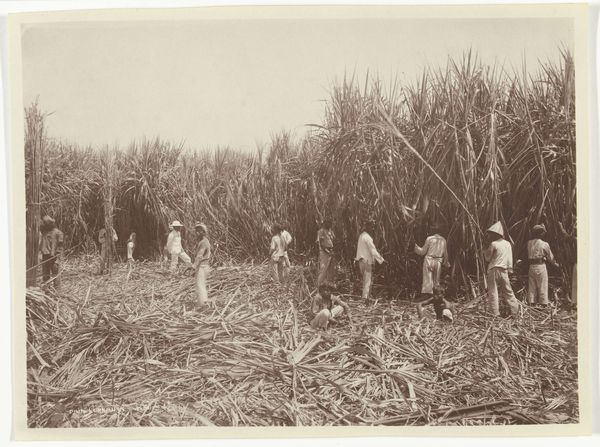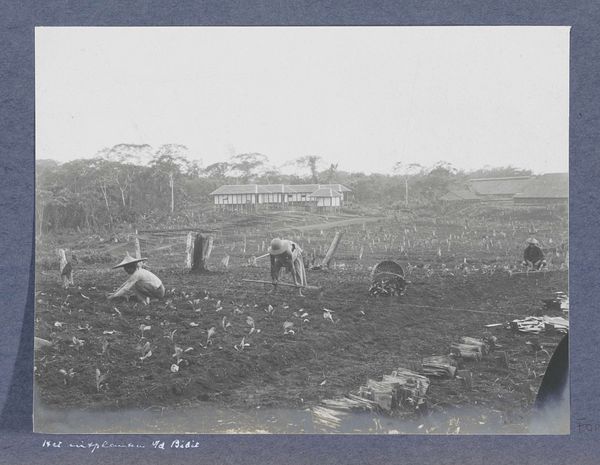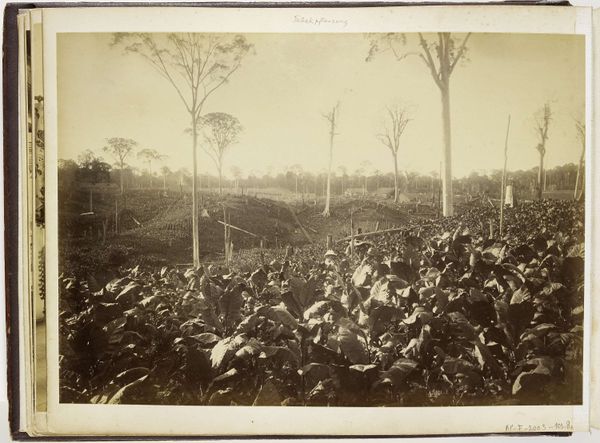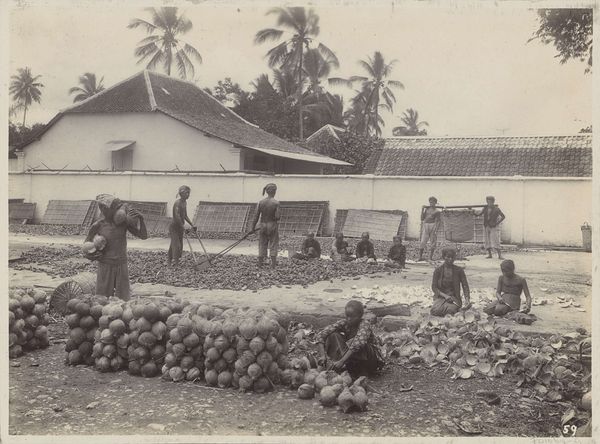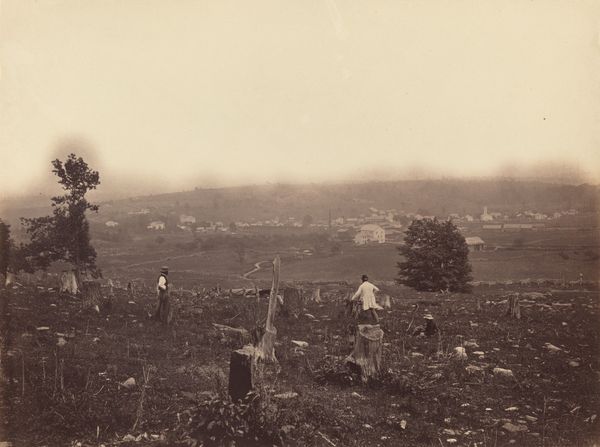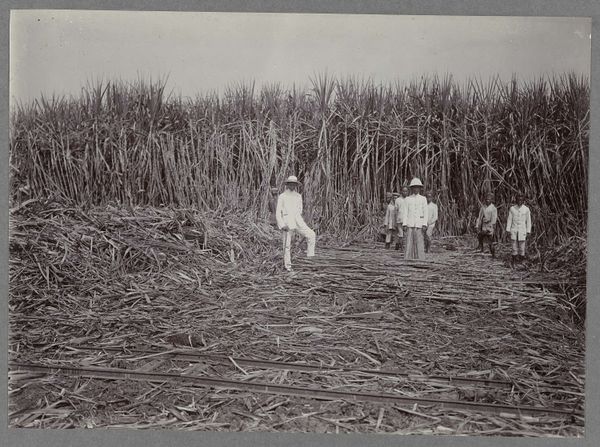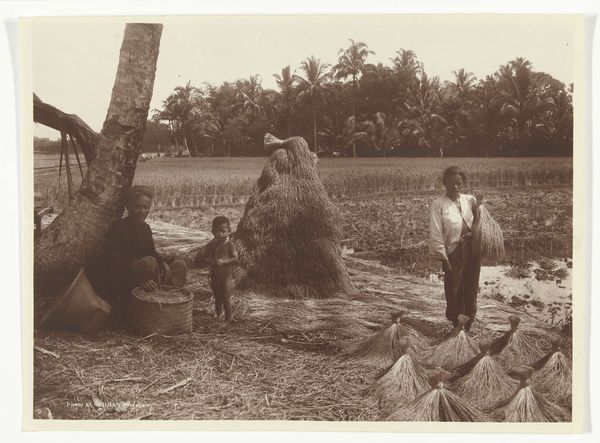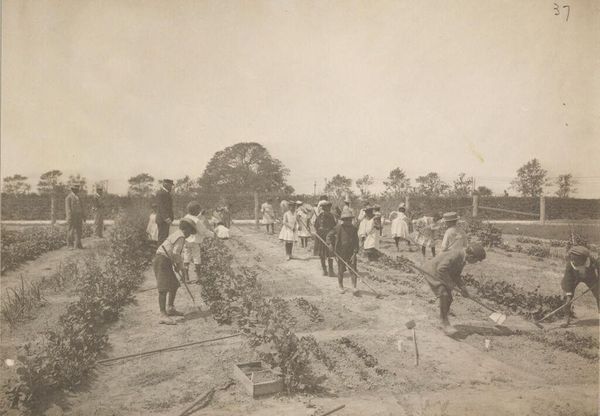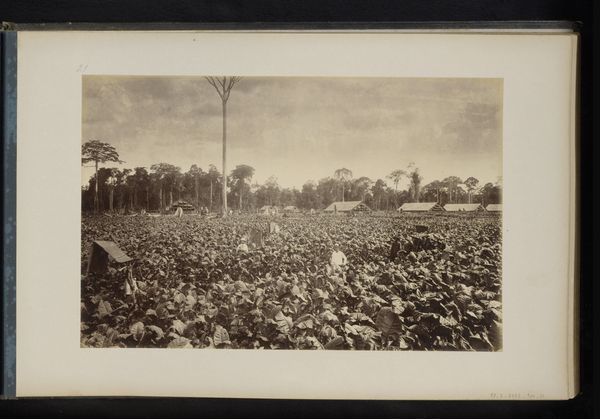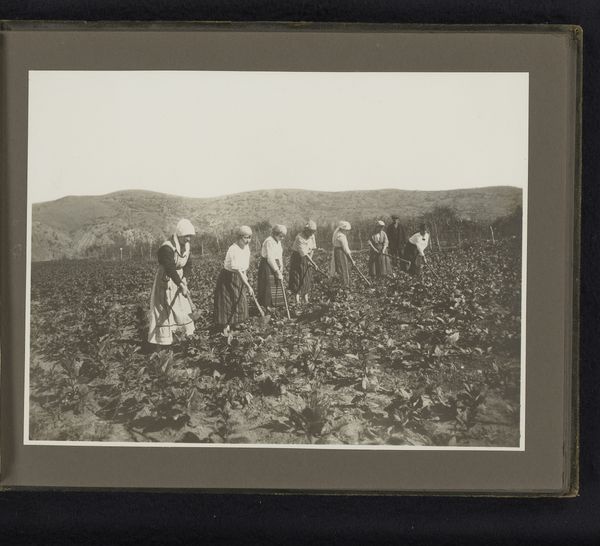
Setting out a Coffee Plantation at Antigua de Guatemala Possibly 1875 - 1877
0:00
0:00
photography, photomontage, albumen-print
#
landscape
#
photography
#
photomontage
#
genre-painting
#
albumen-print
#
realism
Dimensions: image: 13.5 x 23.8 cm (5 5/16 x 9 3/8 in.) sheet: 17.8 x 26.7 cm (7 x 10 1/2 in.) mount: 25 x 33.2 cm (9 13/16 x 13 1/16 in.)
Copyright: National Gallery of Art: CC0 1.0
Curator: This photograph, "Setting out a Coffee Plantation at Antigua de Guatemala", is attributed to Eadweard Muybridge and was likely taken between 1875 and 1877. It's an albumen print, possibly a photomontage, and part of a larger series of landscape and genre scenes. Editor: The first thing that strikes me is the scale and texture. The landscape feels raw, almost brutal with all that upturned earth. And there are so many people spread across that hillside – their labor really imprints on the landscape itself. Curator: Absolutely. Muybridge was commissioned to document the expanding infrastructure and industry in Guatemala. This image isn't just a landscape, it's a document of colonial economics, illustrating the transformation of the land for commodity production, with clear social ramifications. Editor: And the medium, the albumen print, speaks volumes. It's a chemical process. Silver is literally pulled from the earth to create this representation of the earth being transformed by labor. The connection between extraction, image making, and exploitation is very striking. Curator: Indeed. Consider the position of the workers—mostly Indigenous Guatemalans. Their relationship to the land has been fundamentally altered by colonial structures, represented in this staged composition which speaks to themes of power and dispossession within photography’s historical narrative. Editor: It makes me wonder about the individual actions of planting these crops, and the skill needed. I see it being hard manual work. Are these techniques or species specific to this plantation or imported as well? What stories do these materials tell? Curator: These images would have circulated within elite circles in Guatemala and abroad, reinforcing colonial power structures and romanticising this form of exploitation. Editor: So this becomes not just a visual document but also a tool for promoting economic and ideological narratives related to labor, colonial expansion, and the global trade of this crop. Curator: Precisely. Muybridge's lens captured more than just a coffee plantation. It reveals the intersection of colonialism, landscape, and labor shaping Guatemalan history. Editor: Understanding those intersections allows us to deconstruct both the romantic idealism that these kinds of pictures convey, while reflecting on the back breaking materials that compose it, to build a greater political narrative.
Comments
No comments
Be the first to comment and join the conversation on the ultimate creative platform.


